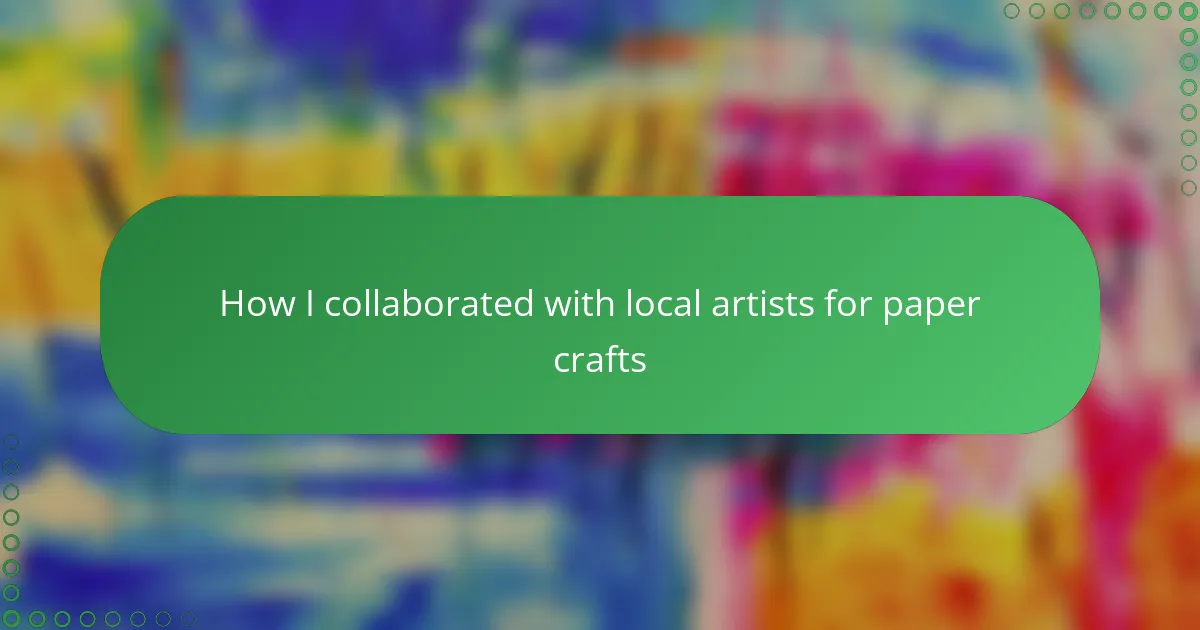Key takeaways
- Handmade paper crafts possess unique textures and imperfections that convey emotion and creativity, enhancing the crafting experience.
- Collaborating with local artists fosters innovation and deepens the appreciation for diverse artistic expressions and shared visions.
- Effective communication, planning, and flexibility are crucial for overcoming challenges in collaborative projects, ensuring smooth progress and inspiring outcomes.
- Showcasing completed works not only highlights the craftsmanship but also invites viewers to engage with the story and artistry behind each piece.
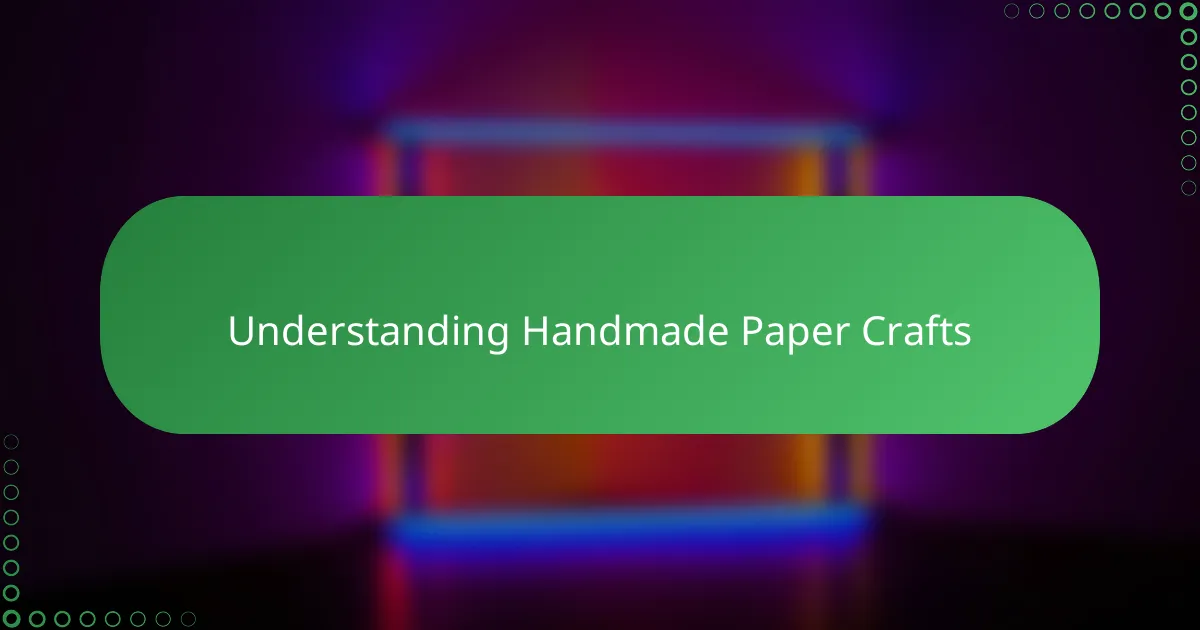
Understanding handmade paper crafts
Handmade paper crafts are more than just materials shaped into designs; they carry a soul that machine-made items often lack. When I first dabbled in this art, I noticed how each sheet seemed to tell a story through its texture and slight imperfections. Have you ever paused to feel the grain of handmade paper? That subtle roughness connects us directly to the hands that created it.
What fascinates me about handmade paper is its diversity—fiber types, thickness, and patterns can vary so much, each influencing the final craft uniquely. I remember collaborating with a local artist who introduced me to paper made from recycled cotton; it added such depth and softness to our projects. This tactile quality invites us to slow down and appreciate the craftsmanship, making every piece truly one-of-a-kind.
Understanding these nuances transforms how I approach paper crafts. It’s not just about folding or cutting; it’s about honoring the traditions and patience embedded in each sheet. Don’t you find it remarkable how something as simple as paper can evoke emotion and spark creativity when treated with care? This appreciation shapes every collaboration and creation in my handmade paper journey.
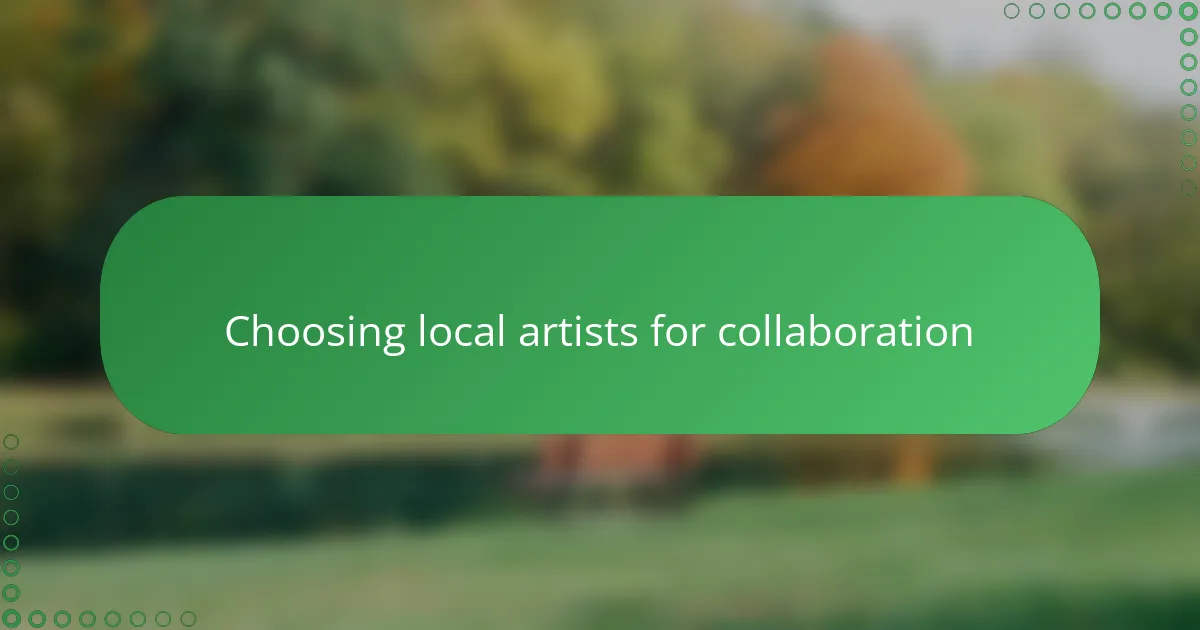
Choosing local artists for collaboration
Choosing local artists for collaboration felt like discovering kindred spirits who share my passion for handmade paper crafts. I sought artists whose values resonated with mine—those who understand the beauty in imperfection and the story behind each fiber. Have you ever met someone whose work immediately spoke to your heart? That’s the magic I chased.
I also paid attention to their connection with the community and their willingness to experiment. One artist I worked with was eager to blend traditional techniques with modern designs, which pushed both of us creatively. Collaborating with someone open-minded made the entire process fluid and inspiring.
In the end, it wasn’t just about skill; it was about mutual respect and a shared vision. I wanted partners who saw paper crafting not just as a hobby but as a form of expression. Does that focus on passion over perfection resonate with you as much as it does with me? It truly changed the way I approach every project.
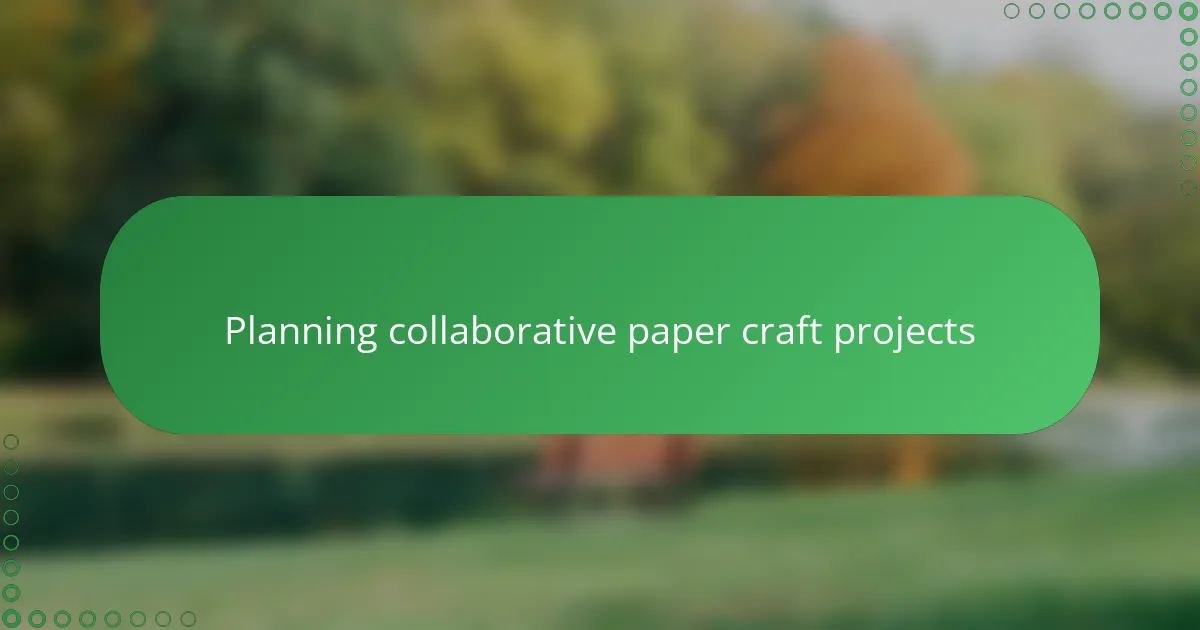
Planning collaborative paper craft projects
Planning collaborative paper craft projects always starts with a clear vision, but I quickly learned that it also requires flexibility. When working with local artists, I try to set a basic framework while leaving room for their unique ideas. Have you ever noticed how the best creations often come from the unexpected twists that happen during collaboration?
Another key aspect is defining roles early on. In one project, discussing who would source materials, who’d handle design, and who’d do the final assembly saved us from confusion later. It made me realize that clarity in planning doesn’t limit creativity—it actually frees it by allowing everyone to focus on what they do best.
I also make it a point to schedule regular check-ins. This might sound obvious, but when we first started, I underestimated how important ongoing communication was for keeping the project aligned and inspired. Have you ever experienced that moment when a quick chat sparks a breakthrough? Those moments are what make collaboration truly rewarding.
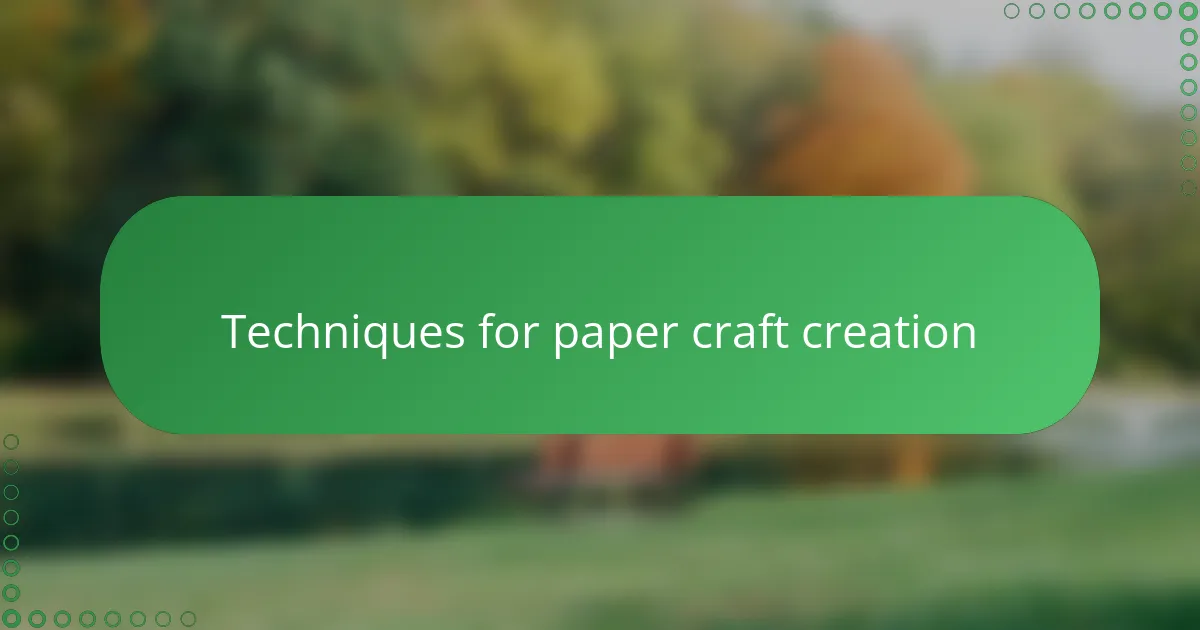
Techniques for paper craft creation
When it comes to paper craft creation, mastering a few fundamental techniques can make all the difference. I’ve found that simple folds, scoring, and layering are the building blocks, but it’s the subtle variations—like the angle of a fold or the choice of adhesive—that bring a piece to life. Have you ever noticed how a perfectly scored fold gives that satisfying crispness that makes the whole design pop?
Cutting techniques also shape the final outcome. Early in one collaboration, I tried freehand cutting without much planning, and the edges looked rough and uneven. After that, I switched to using templates and precision knives, which made the difference between a rushed scrap and a clean, polished element. It’s amazing how small technical adjustments can elevate the entire project.
Finally, I have to mention texture manipulation. Working with local artists taught me new ways to emboss, crumple, or layer papers to create dimension—techniques that add depth without overwhelming the delicate nature of handmade paper. Don’t you find that these tactile details invite viewers to engage not just visually, but almost physically, with the craft? It’s that kind of sensory connection that keeps me coming back to paper craft again and again.
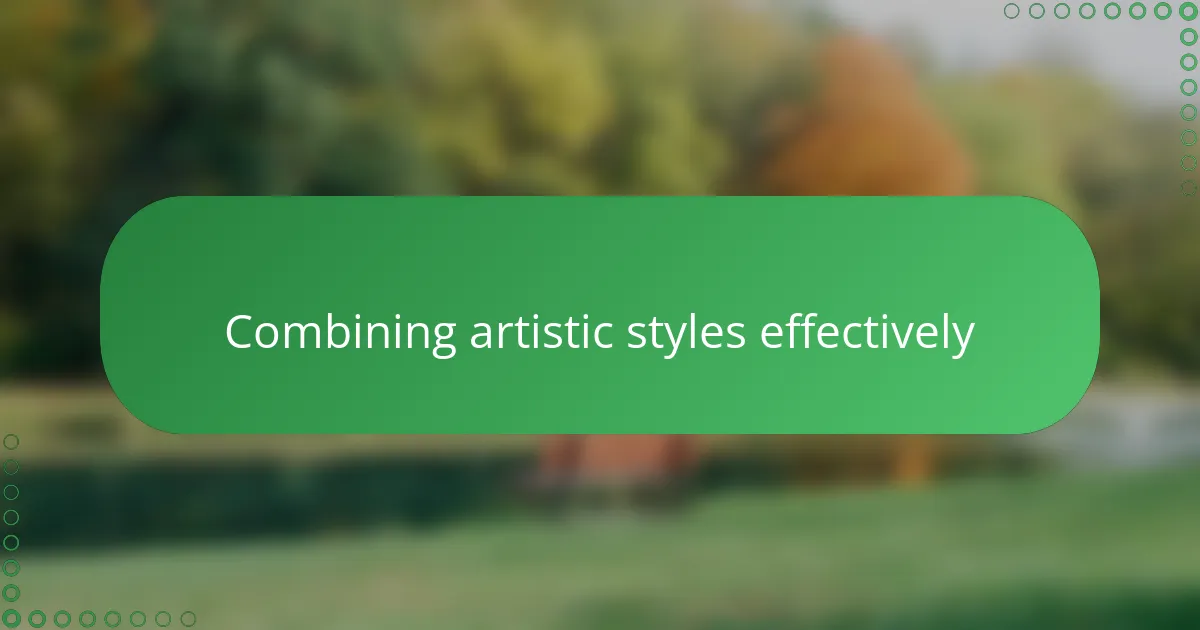
Combining artistic styles effectively
Blending different artistic styles felt like weaving separate stories into one rich tapestry. I discovered that embracing each artist’s unique approach—whether bold brushstrokes or delicate paper layering—creates a dynamic balance that enhances every piece. Have you ever seen how contrasting elements, when combined thoughtfully, can surprise you with unexpected harmony?
I remember working with an artist whose style was very minimalist, while mine tended toward intricate detail. At first, it felt like our visions clashed, but when we gave space to experiment, our differences turned into strengths. That experience taught me the value of patience and openness—sometimes stepping back lets creativity find a natural blend on its own.
What really helped was focusing on shared themes rather than exact techniques. When we aligned on the emotion or story we wanted to tell, merging our styles became seamless. Isn’t it fascinating how a common purpose can unlock collaboration’s true potential? This mindset made the whole process feel less like compromise and more like co-creation.
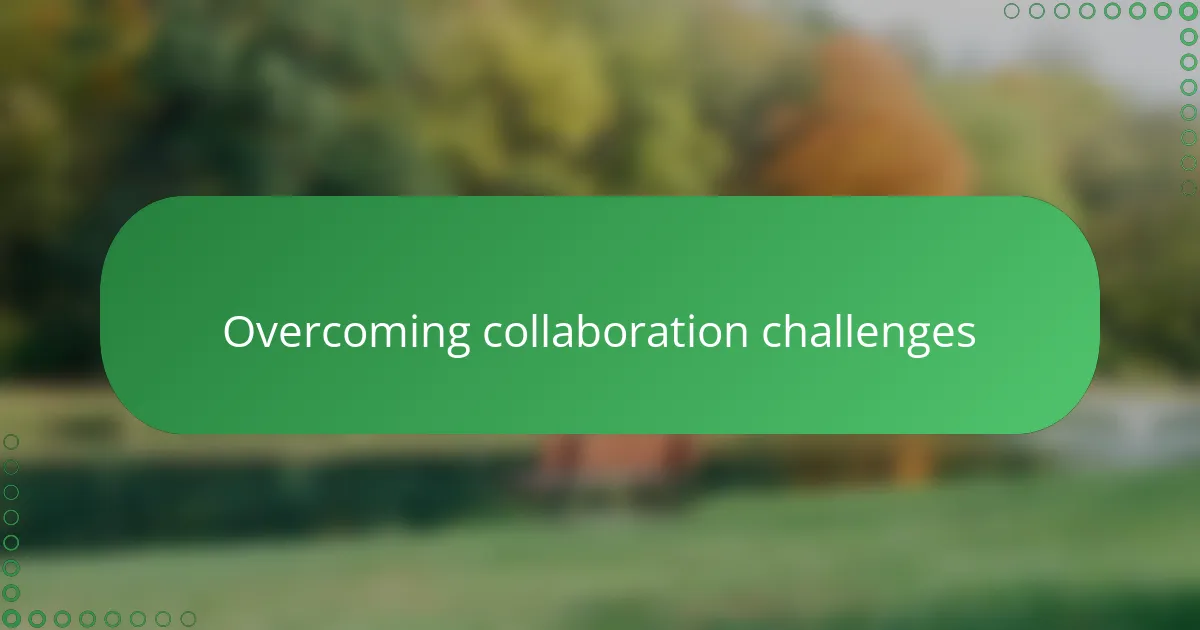
Overcoming collaboration challenges
Challenges in collaboration naturally arose, especially when we had differing visions for a piece. I remember one moment when an artist wanted to use a bold color palette, while I preferred soft pastels; it took honest conversation to find a middle ground that respected both our styles. Have you ever felt that tension between creative ideas? Navigating through it taught me the power of listening deeply and valuing diverse perspectives.
Logistical hiccups also tested our patience—scheduling conflicts and material shortages threatened to slow us down. At first, I found it frustrating, but then I realized flexibility was key. Instead of forcing a rigid timeline, we adjusted plans and embraced delays as part of the process. Doesn’t accepting imperfections sometimes lead to more authentic outcomes?
Clear communication became my lifeline for overcoming misunderstandings. Early on, assumptions about roles caused confusion, but setting up regular check-ins helped keep everyone on the same page. Have you noticed how a simple message or quick call can dissolve uncertainty? Those moments of clarity made collaboration not just doable, but truly enjoyable.

Showcasing completed paper crafts
Showcasing completed paper crafts always feels like unveiling a shared dream brought to life. I recall the first time we displayed a collection made with local artists—each piece reflected not just skill, but the unique spirit of its creator. Doesn’t seeing those delicate details and textures in person make you appreciate the story behind every fold?
I love how exhibitions become more than just displays; they turn into conversations. Visitors often pause, touching the edges gently or marveling at the layering techniques, which reminds me how collaborative efforts can transform simple paper into something almost alive. Have you ever noticed how a well-presented craft invites you to slow down and truly connect with the art?
Sometimes, showcasing involves experimenting with different backdrops and lighting to highlight the nuances of handmade paper. I remember adjusting the soft light just right to reveal the subtle fibers and shadows, which made the collection feel intimate and tactile. Isn’t it fascinating how presentation can deepen our emotional response to something so fragile yet resilient?
